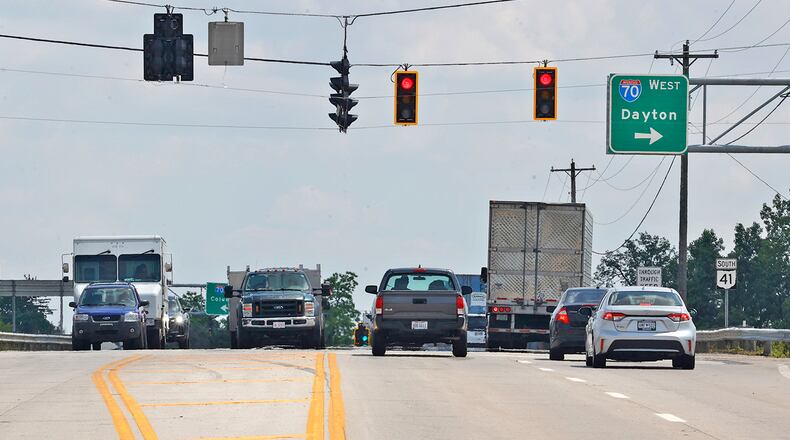“I don’t think it’s a surprise to anyone that there are traffic challenges out there,” Harris said. “Everyone’s experienced it when you drive out there, so we’re looking for ways to improve the traffic situation there.”
The interchange sees about 8,000 cars daily.
The TCC will finalize a study likely by the end of June that focuses on the impact of existing and future development to the area, like development of housing and retail at Melody Parks, plus other projects such as Sheetz, Bridgewater, Sycamore Ridge and Champions Park at the fairgrounds.
The city is building a new fire station on the east side as well, at 3925 S. Charleston Pike. Opening is anticipated between March and July of 2025.
Harris, deputy director of development J. Alex Dietz and Clark County Commissioner Sasha Rittenhouse visited Washington, D.C., recently with the Dayton Development Coalition, also holding meetings with lawmakers’ offices. Proposed future funding for a project at the state Route 41/Interstate-70 interchange was one point discussed.
“The cost of changing that intersection could get very expensive, and so we’re kind of requesting that the federal government, our legislators, be mindful of that and potentially seek out some funds for us during the budgeting processes to bring back to us so we can redo that intersection without having to figure out how we’re going to pay for that ourselves,” Rittenhouse said.
TCC’s executive director, Louis Agresta, said that any proposed interchange changes, like at State Route 41 and Interstate 70, trigger an Interchange Modification Study or an Interchange Operations Study, because these are governed by the Ohio Department of Transportation and considered critical for safety and mobility.
“You can’t just go and modify an interchange. It’s a big lift,” Agresta said. “So it’s going to stay the same until an Interchange Modification Study or an Interchange Operations Study is triggered.”
Within an interchange study, evidence that the proposed new or changed access would not cause significant safety and operational issues on the freeway and assurance that it would connect to a public road and is part of a configuration “that provides for all traffic movements” must be addressed.
Agresta said the TCC took traffic impact studies completed for existing and future developments and used the data to come up with an overall look at what the area and the specific interchange may see. The study is “only as good as the data,” though because some developments may not happen, or end up smaller than planned.
“The other thing to understand is certain developments may not go forward but ... I don’t think the east side of Clark County is going to stop developing anytime soon,” Agresta said. “In some ways it’s almost like we’re a suburb of Columbus, like if you hop on (U.S. Route) 40 there or here at Springview Government Center, I could be in Hilliard in 40 minutes.”
Other findings to improve traffic efficiencies include increasing turn lane lengths to account for more traffic causing more vehicles needing to turn in various areas, including at state Route 41 and Ridge/Titus Road, state Route 41 and 1-70 eastbound and westbound ramps and at Bird Road and U.S. 40, according to the study.
This also includes more traffic signals being needed, but there is a difference between what is feasible and what is recommended.
“In front of the fairgrounds, like every intersection warrants a signal if that development moves forward, but that’s not feasible,” Agresta said.
About the Author
